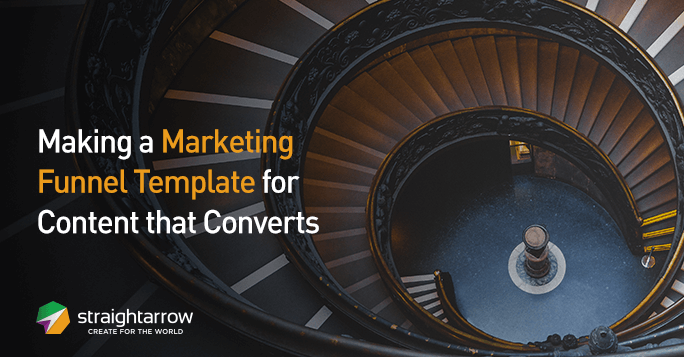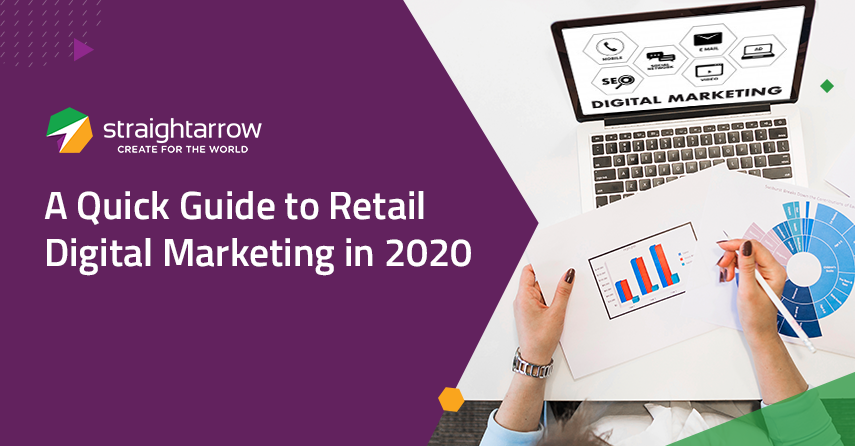
There are a dozen different things you have to consider when trying to make an effective content strategy: distribution, keywords, topics, and so on—and so it’s easy to get lost. Often underestimated, however, is one of marketing’s basic models: the marketing funnel. Simple but universally applicable, the funnel is an efficient method for moving visitors down the path to becoming customers.
Also called the conversion funnel or sales funnel, this marketing model is easy to expand into a more comprehensive marketing schematic that can serve as your guide to making sure your content is always garnering views, driving conversions, and closing sales.
What Goes In
The four segments of the marketing funnel each require different kinds of content, both in terms of the general subject matter and how it’s accessed.
Attract: When attracting customers, focus on topics of broad interest delivered through freely available content. Visitors shouldn’t have to sign up, download anything, or perform any action other than checking your website to access it. Common choices are blog entries or web copy that tackle high-level concerns, such as identifying problems a user is facing and introducing solutions.
Because getting views and visitors is your main priority here, you should choose your keywords carefully and be thorough in your SEO.
Convert: You need to be sure you’re drumming up interest among your visitors. A good way to do that—to find out if you are—is to use low-risk content or content behind a ‘gate’ or form. In this way, users are asked for a minimal commitment of time or resources (like providing their contact details), but get more detailed information in return.
Close: Content that drives purchases should be clear, compelling, and as distraction-free as possible. Consider prominent calls-to-action (CTAs) placed on catalogues, product pages, or other types of landing pages.
It’s generally a good idea to have pages dedicated to closing purchases, which means having web content specifically tailored to this purpose. Some experts recommend having no more than one CTA per page, but businesses that offer a wide range of products may benefit from expansive catalogue pages, as well. Experiment and observe what produces best results.
Delight: Don’t let satisfied customers simply drop off your radar. If they’ve gone through your conversion funnel, you should have the means to reach out to them again (assuming they haven’t opted out), so keep them interested with newsletters or notifications informing them of new products, sales, or anything else your company is up to that might bring them back for another purchase.
Using the four stages of the marketing funnel is a good way to ensure you have all the kinds of content needed to stoke a visitor’s passing interest into a decision to purchase. The labels might change—some use “Awareness, Interest, Desire, Action” for the funnel stages—but the kinds of content needed are generally the same.
The Right Proportions
Another useful aspect of the conversion funnel is the shape itself: the marketing funnel provides a clue to the kind of volume you should expect at each stage, both in terms of traffic and content required.
The higher up the funnel you are, the more people you should expect. As users proceed along the funnel, however, some will lose interest and the flow will thin out—in this regard, the term funnel is a bit inaccurate; your marketing funnel won’t channel everyone from start to end.
Given this, you’ll want a lot of content designed to attract visitors, in order to ensure that you have enough visitors to hit your sales targets, even if a lot of these initial visitors end up petering out along the way.
The exact proportions of content you’ll need for each stage will be dependent on the sort of traffic you get. Keep watch to figure out what percentage of your visitors carry over from one stage to the next.
Similarly, observe what kinds of content are more effective at pushing people down the funnel. Perhaps short videos outdo blog posts for attracting visitors; or maybe white papers are more convincing than case studies in urging purchases.
Monitor these movements well and you’ll be able to determine what mix of content at each stage works best. You can write this information on top of your basic funnel to serve as a guide in keeping your content strategy on track.
Making Sure Things Are Moving
You’d have noticed by now that tracking your content’s performance is important to making the most of a marketing funnel template. The best way to do so is to observe the actions that should be taking place at each stage of the funnel. You might think of it like this:
Attract: How many views is the content getting?
Convert: How many visitors are filling out and submitting forms?
Close: How many people are purchasing?
The exact indicators would depend on how you set your content up. For instance, if your strategy involves a mix of email or social platforms, you may have other metrics to track. What’s important is for your funnel to have a built-in way of monitoring its progress easily. In this way, you can reconfigure your strategy when necessary and ensure your marketing funnel template reflects the practices that work best for your business.
A marketing funnel template is especially appealing because of how well it fits into any marketing project. If you’ve got a project you’re starting on, check out our project brief and creative brief templates for more ideas on starting your projects right.











Comments